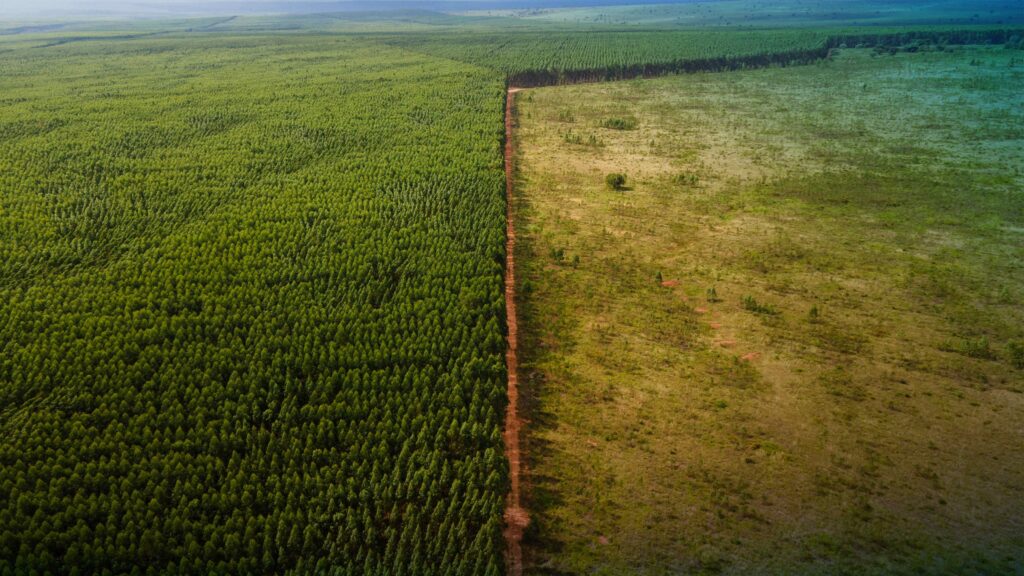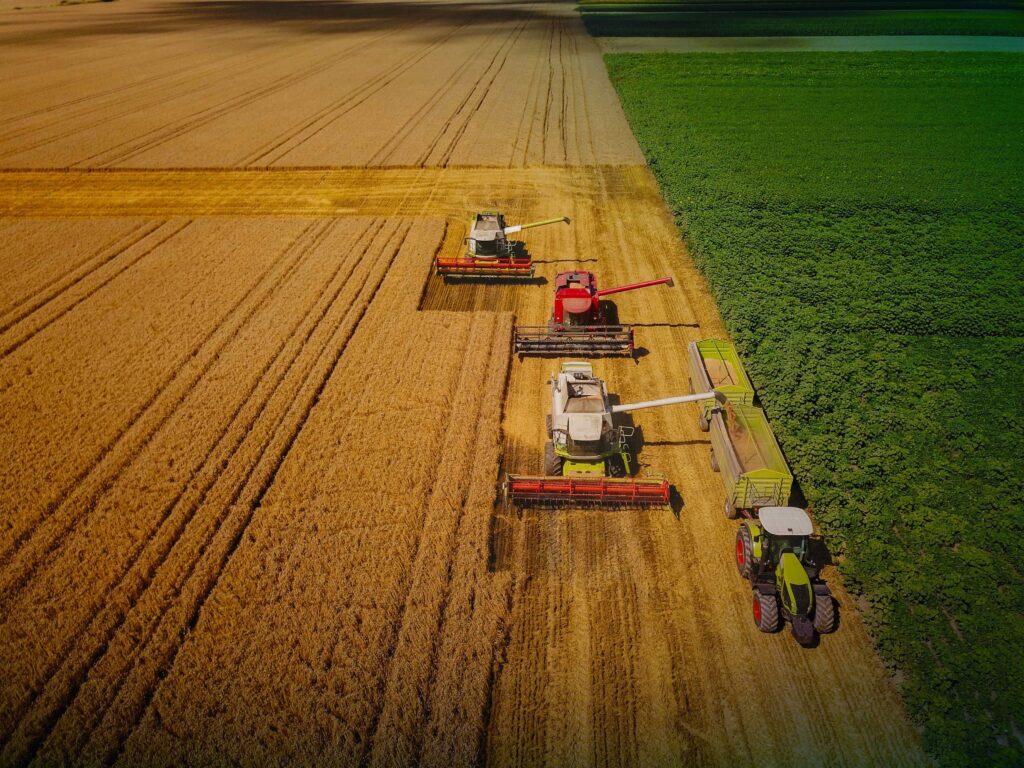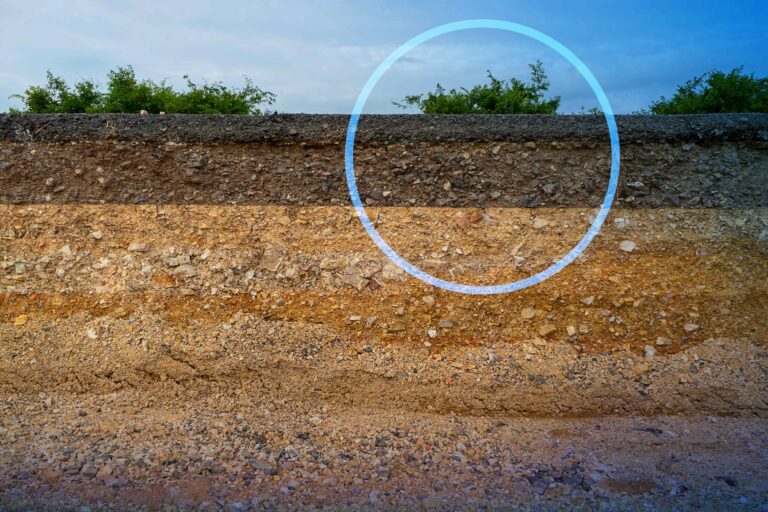We often think of Earth as the “Blue Planet,” but what about all that brown stuff on the ground? In the same way that water is fundamental to human survival, so too is soil. The ground we grow in has a profound influence on the world around us: high-quality soil means more nutrient-dense food, economic viability and even cleaner air.
Today, more than one-third of the world’s available farmable land is considered degraded to some degree. In places like sub-Saharan Africa, 65% of the soil is so poor in health that it’s practically unusable for agricultural practices. Even in more urban environments, like continental Europe, nearly two-thirds of available soil is considered unhealthy. Industrial farms are aiming to meet increasing consumer demands, but limited technological resources have often led to agricultural practices that can further upset the delicate balance required of soil for optimal growing.
It’ll take more than a till to recover from some of the impacts of degraded soil, but the good news is that it’s possible to reverse those effects in a relatively short timeline.
What is soil degradation?
Soil, contrary to popular belief, is a living thing. It’s not just dirt, but an ecosystem home to diverse organisms that provide the ideal breeding ground for crops of all kinds. Happy, healthy soil has an ideal pH between 6.0 and 7.5 and a composition that includes bacteria, fungi and even earthworms. But contents alone aren’t what make for good soil: structure is just as important. As a living thing, soil needs to breathe, and it needs room to do so. Crushing or otherwise compacting soil impacts its ability to give plants the adequate environment they need to thrive.
What causes soil degradation?
Degradation occurs when external forces damage the structure, nutrient absorption, oxygen levels and pH balance of soil. Some common causes include heavy agricultural machinery use, livestock overgrazing, chemical runoff from fertilizers and deforestation. Drought, flooding and other natural weather disasters can also impact soil health.
Industrial farms are in a tough spot when it comes to meeting consumer demands and simultaneously conserving and preserving the land they grow on and the soil they grow in. The good news is that new technologies and approaches are rapidly developing that will allow farmers to maximize yields and protect their land.

How does soil degradation impact our world?
Soil is more than just the dirt underneath us. The impact of its quality and health reverberates across industries, from food production to pharmaceuticals and beyond.
Food security and nutrition
The progressive loss of quality soil with essential nutrients directly undermines agricultural productivity, leading to reduced crop yields and increased vulnerability for global food systems. For consumers, that means the produce they buy doesn’t deliver the vitamins, minerals and other nutrients they assume they’re getting.
According to a 2024 paper from the European Society of Medicine, “grain crops and forages grown on depleted soils are deficient in some of the 17 critical micronutrients, protein amount and amino acid composition, and in vitamins and other constituents essential to human health and wellbeing.” Given how much of the food we consume is grown in soil, the impact of this is significant.
Similarly, a study from the National Institutes of Health found that “the global expansion of food production has increased rates of soil micronutrient mining that can lead to eventual declines in crop yields.” It isn’t just that industrial farming can lead to less nutrient-dense food: it can also lead to a decrease in the ability to grow food at all.
Medical implications
Nutritious food is only one of the impacts of healthy soil. Approximately 25% of medicines on the market today are plant-derived or based. For the future of pharmaceuticals, good growing land is a necessary challenge to be addressed. If the plants being harvested for these purposes are nutrient-deficient, the medicines won’t be as effective for patients.
Environmental consequences
A decline in soil health triggers a cascade of environmental effects. Soil plays a significant role in regulating water quality; when it’s degraded, its ability to do so is reduced, since it can’t filter out impurities in rainwater or runoff. The microorganisms that live within it are similarly impacted, and their stifled contributions to a broader ecosystem can lead to a loss in biodiversity.
When soil is degraded, climate change is accelerated. Carbon sequestration, a process that naturally occurs through interactions between living soil and the air around it, slows down considerably. Methane and other greenhouse gases are emitted in increasing amounts. It isn’t just the soil and the crops growing in it that can suffer when degradation occurs: it’s the entire ecosystem and the environment at large.
What are the solutions for soil degradation?
Addressing soil degradation requires both protecting what remains and innovating new approaches to agricultural production. Unlike some other climate change-related issues, soil health can be improved in the short term – it’s an issue we can see improved in our own lifetimes. It doesn’t require the budget necessary for large-scale infrastructure change or the political capital to introduce tax incentives for businesses and consumers to buy greener products. From small farms to large, available solutions are abundant.
“When we restore soil, we restore the foundation of every sustainable economy,” explained Quentin Sannié, co-founder and chairman of soil diagnostics company Genesis, at Science Week 2025. Sannié views agriculture as part of the solution to ensuring a future free from degradation of farmlands. His company’s approach puts power into the hands of farmers to make sure they have access to information on their soil health and can then implement solutions to improve and maintain it.
For commercial operations, a solution like Genesis can be the building block for powering a sustainable company and economy. On top of that, having a lifecycle assessment tool can empower sustainable decision-making throughout the business, from the machinery purchased to the tools used. Keeping in check the element of environmental protection for a farm’s purchases and decisions is made easy and accessible. It’s this kind of tool that indicates how achievable sustainable agriculture is at any scale.
This approach, though, is just one of many available for agricultural operations.
Innovative indoor farming
Take Futura Gaia, for example. They’ve developed indoor vertical farming systems that use living soil, which contains living organisms that promote healthy plant growth. These systems, developed on the 3DEXPERIENCE platform, are located inside the company’s “biofactories,” which, due to their vertical nature, can be erected anywhere, even in urban areas. By simulating the ideal environment for plant growth, Futura Gaia presents an alternative solution to traditional agricultural practices.
Regenerative agriculture solutions
For farmers who aren’t looking to set up shop in a biofactory, circular and regenerative solutions are also available. NetZero, a French startup and current member of the 3DEXPERIENCE Lab accelerator program, is focused on innovating solutions that improve agricultural outcomes sustainably.
The company has developed a chamber inside which agricultural waste can be burned to generate both renewable energy from emitted gases and organic material that can be added back to soil to improve its quality. That organic matter is biochar, a regenerative material that removes carbon from the air while enhancing soil structure.
Intelligent agricultural equipment
For industrial farms to be productive, they need to use machines to till and harvest crops. While most machinery is designed with productivity and not impact in mind, Titan LATAM is taking a different approach. The company leverages ENOVIA and SIMULIA solutions to design and manufacture tires with specialized low sidewalls that reduce soil compaction. The decision to ensure their equipment is soil-friendly embodies the commitment that more agrotech and agriculturally-adjacent companies are taking to preserve and protect while still being productive.

Can soil degradation be reversed?
Yes, soil degradation can be reversed through dedicated restoration efforts. While severe degradation may take decades to fully restore, many soil improvement techniques show results within two to five years. The key lies in implementing sustainable practices that work with natural soil processes rather than against them.
A healthier future for our soil
Soil degradation is more than an agricultural issue: it’s a challenge for food security and human health. Current estimates suggest that by 2050, 95% of the world’s soil will be degraded if solutions aren’t actively identified and implemented.
Unlike other environmental challenges, though, the solutions for improving soil quality aren’t impossible to imagine or implement. Through innovative solutions and regenerative practices, it’s possible to restore what’s been lost and build an agricultural future that nourishes both people and planet.
The soil beneath our feet is not simply the foundation of agriculture—it’s the foundation of civilization itself. Protecting and regenerating it is not just an environmental imperative; it’s an investment in flavor, nutrition, medicine, and the future of humanity.

